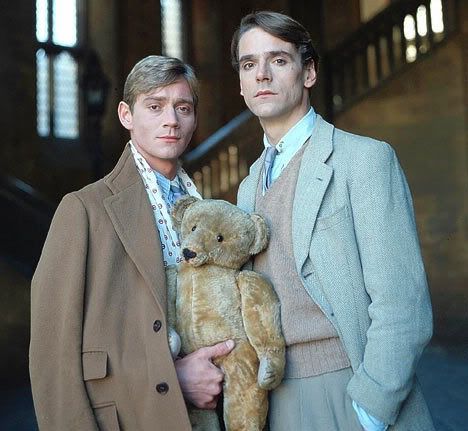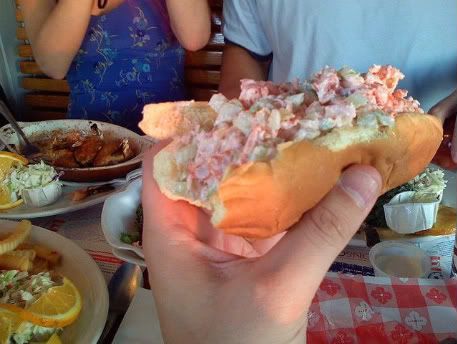new posts in all blogs
Viewing: Blog Posts Tagged with: john betjeman, Most Recent at Top [Help]
Results 1 - 7 of 7
How to use this Page
You are viewing the most recent posts tagged with the words: john betjeman in the JacketFlap blog reader. What is a tag? Think of a tag as a keyword or category label. Tags can both help you find posts on JacketFlap.com as well as provide an easy way for you to "remember" and classify posts for later recall. Try adding a tag yourself by clicking "Add a tag" below a post's header. Scroll down through the list of Recent Posts in the left column and click on a post title that sounds interesting. You can view all posts from a specific blog by clicking the Blog name in the right column, or you can click a 'More Posts from this Blog' link in any individual post.

A few weeks ago, my Poetry Friday post celebrated ‘locale’ by looking briefly at the poet John Betjeman who wrote moving poems about the England of his time. Reading Betjeman’s poetry reminded me of a book I’d recently acquired at a cast-off library book sale. A Winnipeg Childhood by Canadian writer, Dorothy Livesay, recounts the author’s growing-up years in the central Winnipeg neighborhood of Wolseley in the early 1900’s. Livesay, a celebrated Canadian writer whose centenary is this year, presents the neighborhood she grew up in through her alter-ego child character, Elizabeth.
Reading about my particular neighborhood as it appeared to Elizabeth a hundred years ago was fascinating. Some things never change: In “Preludes,” Livesay describes a hot summer day that leads eventually to a rip-roaring thunderstorm that is watched from the verandah. How often, my children and I have sat out on our verandah as well, watching summer storms with their peals of thunder and cracks of lightening in much the same way as observant little Elizabeth! A few weeks ago, my mother-in-law showed me an old black and white photograph of her Mennonite aunt sitting on a chair at a lakeside cottage of a family she worked for as a maid in Winnipeg. In “Anna,” Livesay describes young Elizabeth’s relationship to the Polish immigrant woman who accompanies the family to their cottage at the Lake of the Woods. For me, seeing the photo and then reading the story later brought new perspectives from the past to the kind of world that existed in Winnipeg in the neighborhood my children currently call home.
Do you live in a richly storied neighborhood? Are there any books about your locale that recount a childhood spent there? Have you read them to your children? What was their response?
Photo Credit: © Bryan Scott of Winnipeg Love & Hate
 British poet John Betjeman was a great lover of place; he celebrated locale in a way that greatly endeared him to his readers. The local parish church, the small town, city neighborhoods and gardens — all fell under his wry and sensitive gaze. A Ring of Bells is a collection of his poems selected for young readers by Irene Slade. It’s an old book, published in 1962, but definitely worth perusing to get the flavor of a poet deeply ensconced in his local world. Here’s a playful example with place names from his poem “A Lincolnshire Tale:”
British poet John Betjeman was a great lover of place; he celebrated locale in a way that greatly endeared him to his readers. The local parish church, the small town, city neighborhoods and gardens — all fell under his wry and sensitive gaze. A Ring of Bells is a collection of his poems selected for young readers by Irene Slade. It’s an old book, published in 1962, but definitely worth perusing to get the flavor of a poet deeply ensconced in his local world. Here’s a playful example with place names from his poem “A Lincolnshire Tale:”
Kirkby with Muckby-cum-Sparrowby-cum-Sphinx
Is down a long lane in the county of Lincs,
And often on Wednesdays, well-harnessed and spruce,
I would drive into Wiss over Winderby Sluice.
Betjeman’s focus on place was explored in prose as well as poetry. He wrote numerous books about church architecture and English towns which are also worth perusing. In honor of Betjeman’s centenary in 2006, a poetry competition for young people was launched. The John Betjeman Young People’s Poetry Prize is now in its third year and is open to 11-14 year olds living in the United Kingdom. Entrants are to submit one poem about their local surroundings. The competition was launched to encourage young people to think about the importance of place. This year’s deadline is coming up soon on August 31.
What about where you live? Are you inspired by the buildings of your city or by the natural settings of your cottage or farm? Have you ever wondered about your city or street’s name? Are there poets who have wrested those familiar sites of your world into words that resonate and move you?
Today’s Poetry Friday host is Andromeda Jazmon at A Wrung Sponge.

Anthony Andrews as Lord Sebastian Flyte, Jeremy Irons as Charles Ryder, and Aloysius
I'm simply over the moon that you could join me today, the last Poetry Friday of the July-August Teddy Bear and Friends Picnic. It's the perfect time to salute Aloysius, the bear who appeared in the 1981 BBC television series, Brideshead Revisited, based on the novel by Evelyn Waugh.
As I mentioned in this post, seeing Aloysius prompted me to start collecting bears. I think it was the first time I realized that many adults still have their childhood teddies, and it's absolutely nothing to be ashamed of!
Waugh based Aloysius on Archibald Ormsby-Gore (Archie), the real-life bear of poet, writer, and broadcaster, Sir John Betjeman, a friend at Oxford. Betjeman (tutored by C.S. Lewis), took Archie along to Oxford in the 1920's, and died with him in his arms in 1984.
Archie has been described as being decidedly Protestant or Baptist, with strict moral codes, opposed to drinking and smoking. It's a good thing somebear was of a responsible ilk, since Betjeman, apparently, was somewhat of a bounder.
The bear used in the series belonged to famous British teddy bear enthusiast and actor, Peter Bull, who initially named him Delicatessen. Seems Delicatessen spent his first 50 years on a grocery store shelf in Maine before its owner sent him to Bull for safekeeping. So the famous bear who starred in this very British series was an American, a 1907 Ideal Novelty & Toy Co. bear, to be precise, who changed his name to Aloysius, garnered international fame, and now resides in a museum near Oxford.
All this talk of England makes me want to watch the series, one of my all-time favorites, once again. I remember visiting Oxford in the late 70's; the dreamy spires were magnificent, and just breathing the air made me feel smarter. In the world of Brideshead Revisited, the idle rich seem unhappily thwarted by Catholic guilt, and there is Aloysius, a symbol of Lord Sebastian Flyte's refusal to grow up.
In the opening scene, Sebastian invites Charles Ryder to lunch in his rooms at Christ Church College (YouTube version here). There is lots of champagne, plover eggs in a mossy nest, and lobster thermidor. At one point, one of Sebastian's guests, Anthony Blanche, recites from T.S.Eliot's The Waste Land (thought to be shocking at the time) through a megaphone. This is based on a true incident enacted by future art critic Harold Acton, who wished to "excite rage in the hearts of Philistines."
Exploring hands encounter no defence;
His vanity requires no response,
And makes a welcome of indifference.
(And I Tiresias have foresuffered all
Enacted on this same divan or bed;
I who have sat by Thebes below the wall
And walked among the lowest of the dead.)
*Fans self*
Today, let's celebrate innocence in the midst of decadence. Just for you, I'm pulling out all the stops -- lobster rolls, champagne, and John Betjeman's poem about his beloved Archie.

Here's to poetry, friends, good health and good writing!

Doesn't this look scrumptious? Great recipe here.
Nothing left to do now, but close your eyes and think of England. Pip pip!
(Sorry, my plover wouldn't lay for me.)
ARCHIBALD
by John Betjeman
The bear that sits above my bed
A doleful bear he is to see;
From out his drooping pear-shaped head
His woollen eyes look into me.
He has no mouth, but seems to say:
'They'll burn you on the Judgement Day.'
Those woollen eyes, the things they've seen
Those flannel ears, the things they've heard --
Among horse-chestnut fans of green,
The fluting of an April bird,
And quarrelling downstairs until
Doors slammed at Thirty One West Hill.
(Rest is here, scroll down for poem.)

Let's hear it for teddies!!
Bearly believable Poetry Friday Roundup can be found at Big A little a.
**Bonus video: Sebastian and Charles here, with great shots of Aloysius. How wonderful to drift down the river with a picnic lunch and champagne!
Lobster Roll photo posted in accordance with Creative Commons Attribution 3.0 License.
*sigh*
I'm beginning to wonder if my Fridays are jinxed ! I got paid today although it appears that my boss still didn't sort out the screw up of my wages from two weeks ago (waiting for my pay slip to arrive so I can cross check it with my pay claims and find out for sure). But since I had money - and an unexpected afternoon off (after working flat out all last weekend, despite it being a public holiday weekend), I went out to do some errands earlier, and I managed to twist my ankle on one of our dodgy local pavements. Trouble was, I didn't just twist my ankle, I lost my balance as well...
So now I have one bruised and swollen left knee, one bruised and swollen left wrist, and one bruised and swollen right arm from inside wrist to outer elbow...
Oh AND a sore right ankle.
The only thing I didn't HIT was my head - and that's probably only because everything else had already come into contact with the ground or the nearby bench (that my right arm hit) before my head could get there !
And of course, my dignity is bruised, but at least no one can see THAT !!
I was picked up by two lovely chaps who were sitting outside the cafe opposite which I took my tumble and one, the cafe owner, fetched me a large cup of cold water after checking I hadn't hit my head and didn't need an ambulance.
Life - why do you hate me so much?
Anyway, I've been meaning to share this poem by John Betjeman for a few weeks now, so here it is without further ado:
Diary of a Church Mouse
Here among long-discarded cassocks,
Damp stools, and half-split open hassocks,
Here where the Vicar never looks
I nibble through old service books.
Lean and alone I spend my days
Behind this Church of England baize.
I share my dark forgotten room
With two oil-lamps and half a broom.
The cleaner never bothers me,
So here I eat my frugal tea.
My bread is sawdust mixed with straw;
My jam is polish for the floor.
Christmas and Easter may be feasts
For congregations and for priests,
And so may Whitsun. All the same,
They do not fill my meagre frame. For me the only feast at all
Is Autumn's Harvest Festival,
When I can satisfy my want
With ears of corn around the font.
I climb the eagle's brazen head
To burrow through a loaf of bread.
I scramble up the pulpit stair
And gnaw the marrows hanging there.
It is enjoyable to taste
These items ere they go to waste,
But how annoying when one finds
That other mice with pagan minds
Come into church my food to share
Who have no proper business there.
Two field mice who have no desire
To be baptized, invade the choir.
A large and most unfriendly rat
Comes in to see what we are at.
He says he thinks there is no God
And yet he comes... it's rather odd.
This year he stole a sheaf of wheat
(It screened our special preacher's seat),
And prosperous mice from fields away
Come in to hear the organ play,
And under cover of its notes
Ate through the altar's sheaf of oats.
A Low Church mouse, who thinks that I
Am too papistical, and High,
Yet somehow doesn't think it wrong
To munch through Harvest Evensong,
While I, who starve the whole year through,
Must share my food with rodents who
Except at this time of the year
Not once inside the church appear.
Within the human world I know
Such goings-on could not be so,
For human beings only do
What their religion tells them to.
They read the Bible every day
And always, night and morning, pray,
And just like me, the good church mouse,
Worship each week in God's own house,
But all the same it's strange to me
How very full the church can be
With people I don't' see at all
Except at Harvest Festival.
This week's poetry round-up is over at Writer2be.

By:
Anne Boles Levy,
on 1/18/2008
Blog:
Book Buds KidLit Review
(
Login to Add to MyJacketFlap)
JacketFlap tags:
poetry friday,
Rhyme Time,
~Poetry Friday~,
Protagonist is a Boy,
divorce,
blended families,
remarriage,
stepfathers,
stepsons,
Poetry,
4-6 and older,
African Americans & Diaspora,
Latino Culture,
Add a tag
Oh, Brother!
By Nikki Grimes; illustrated by Mike Benny
Greenwillow
One of the most powerful poetic storytellers has done it again. With a few keystrokes, a rhyme here and there, she's woven a moving story of how two very different boys become brothers in more than name.
We don't learn the narrator's name--Xavier--until late in this collection, but we do get plenty of his opinions about his mother's remarriage. He loves his new Dad, but not the boy, Chris, who comes as extra baggage, getting in the way, acting all perfect, taking up space, throwing his small family off balance:
STEPS
Everyone in this house
is a step, now.
Stepmom.
Stepdad.
Stepson.
Stepbrother.
In my mind,
I turn them into steps
I can climb
And when I reach the top,
I rule.
Several of the poems are told in rhyme, others are simple, quick dabs of free verse, meant to convey a fleeting emotion. Few kids' poets are as adept as Grimes in exploring their emotions with such range and empathy, and in so few words.
At last, the two boys have their breakthrough, and if you're not crying as their bond strengthens, you're probably dead. And when we do learn the narrator's name, as Chris practices writing it, Grimes creates a magical moment for Xavier to grow. She respects her character enough to know he probably has a tough time expressing emotions, and instead gives us his actions:
I swipe his pen
and write H-E-R-M-A-N-O
"Huh?"Chris can be slow.
"It means brother," I say.
"That's my name now,
one you already know how
to spell."
We know immediately what's going on in Xavier's head, because Grimes respects our intelligence too.
Benny's illustrations follow through on Grimes' many hints that this is a multiracial family--Latino and African-American--but this could be any boy's blended family today. Kids have a tendency to recover, to patch together a new life and a mended heart. Grimes takes us there, until we want to adopt this new family and make it our own.
Rating: *\*\*\*\
Papi's Gift
by Karen Stanton; illustrated by Rene King Moreno
Boyds Mills Press
Graciela's birthday's coming up, and her Papi is sending a box of goodies all the way from the United States to her dusty, drought-stricken home in Guatemala. Only her luck is pretty lousy. Not only did the drought send Papi away in search of work, but the promised box never arrives. And everywhere this poor, brokenhearted girl looks, she's reminded of her Papi weeping over the payphone, trying to sing a feeble "Happy Birthday."
Stanton doesn't go for the easy, Hollywood ending, but hints that things will get better. After all, if everything always worked out fine, there wouldn't be huge numbers of Papis eking out a living in farm fields across the U.S.
To paraphrase an old newspaper saying, a million Papis are a statistic--one Papi is a tragedy. The story humanizes the plight of those left behind by immigrants in a way no news story every could. We peer in on Graciela as she downgrades her expectations so that merely sighting a few clouds lifts her spirits. She re-learns how to hope, but without the text ever feeling didactic or moralizing.
King Moreno's pastels create soft edges and rounded contours, and draw their inspiration from the warm mix of colors associated with Guatemalan culture.
Rating: *\*\*\
Armando and the Blue Tarp School
by Edith Hope Fine and Judith Pinkerton Josephson; illustrated by Hernan Sosa
Lee & Low Books
When Stephen Colbert coined truthiness, he no doubt meant more cynical manipulations than this sweet, uplifting story about an eager boy in a squalid shantytown who yearns for some schooling. But going into it, I had that ol' gut feeling that the teacher and his tarp were likely real, and I assumed the boy to also be real and not a "composite," whatever that may mean.
My disappointment was keen, and grew more so reading end notes that raised as many questions as they answered.
The composite creation called Armando lives on the edge of a Mexican trash dump, where he's expected to join his father in digging for usable cast-offs and food. It's a sad, dreary existence, but Armando steals time each day to gather with other kids on a tarp spread by an American, Senor David, who teaches them reading, math and art.
Armando, filled with youthful optimism, hopes that even this meager schooling might one day lead to a better life.
It does, but not until a fire sweeps through the shantytown. Armando's drawing of the blaze ends up in an important newspaper, and a donor is found to build a school.
As the end notes explain, the authors encountered teacher David Lynch in 1985 while freelancing for the Los Angeles Times, and his school now has four walls and no shortage of Armandos. They decided to build a fictional story around his school. But were there no true stories among those amazing and brave families to chronicle?
And if their original article led to the anonymous donor, why did they need to invent the fire and the boy's artwork of it?
Why, in fact, invent the boy? Did they feel that having a dramatic character arc overruled the readers' yearning to believe? Were they aiming for some Greater Truth?
It's impossible not to draw parallels with Mia's Story by Michael Foreman, who also met a hardscrabble family living off a landfill, albeit in Chile, that also underwent a transformation. Foreman clearly took liberties in his second-hand recounting.
Foreman insisted Mia was a real person and I had no reason to doubt it, however fanciful his re-telling. Hints of magical realism could be interpreted as superstition or wishful thinking, but no such leaps of logic seem acceptable when it's the character, and not the story, that is pieced together.
Perhaps the problem's my "gut" and not the storytelling, but a tale that plays on expectations and emotions without being up front still feels like a manipulation.
Rating: *\*\









Hi Michele!
Sorry about the odd experiences you've been having. Get yourself some arnica for that ankle. And a bottle a scotch. And some good past episodes of DW. I'll be thinking of you.
Thanks Sheila...
I'm actually writing a DW story for a friend's birthday tomorrow as a way of soothing myself.
(Don't like Scotch, so I'll give that a miss, but I did just munch some Jaffa cakes ! :D )
I've applied ice to the bruises at the behest of my friendly neighbourhood Pharmacist (I'd gone in to pick up my asthma medication and he saw the bruises on my right arm and darn near freaked 'cos they were so huge and already black !)
Wow, I have a blog doppleganger! Hi, other Sheila!
Michele, I'm so sorry about your day. Sounds really rough. I hope your bruises (and your dignity) heal quickly. I loved the poem!
I checked out your profile and your blog, other Sheila, and I see that you are homeschoolers - so are we! This is getting eerie!
Oh Michele! I'm so terribly sorry about your tumble. I hope you're not feeling too horrible tomorrow.
I only just read this poem in a collection somewhere else in the past week or two, and I thoroughly enjoyed it. I was extremely happy to see it here, too!
The bruises are now spectacular angry red and black lumps - quite the most spectacular bruises I've ever had. My knee is stiff and sore, but that's to be expected. My dignity is shredded but invisible so I'll live !
Glad you all enjoyed the poem...
That church mouse has a keen eye for human behavior.
Here's hoping your bruises turn green and yellow and disappear by NEXT Friday when you report to us that your pay has been reinstated (with bonus compensation for the errors) and that the universe has treated you with kindness and consideration seeing as you've more than paid your dues. (Hear that, universe? YOU OWE HER BIG TIME!!!)
Oh I wish, Mary Lee !!
I won't hold my breath though... For one thing, they won't pay before May 23 as I get paid fortnightly - and I've no idea how long it'll take to sort out...
But, yes, the mouse is very observant !
Love this poem; have a special fondness for Betjeman because of his famous teddy bear.
So sorry to hear about your spill. Hope you're not TOO uncomfortable today.
Lucky you, to live in Oxford!
Jama I've long been fond of Betjeman for many reasons (the teddy bear included !)...
I'm not too uncomfortable thanks - just awed by how spectacular the bruises are 24 hours later !
Hi Michele, what a horrid day! I haven't been checking blogs much lately, but then when I do, why does it have to be such bad news?
Take care.
I'll do my best Lee, thanks...
Yes! What Mary Lee said! Here's hoping for better news next week. (or at least on May 23). I'm sorry to hear about your bruises. Sounds painful.
I'm so sorry to hear you had such a rough day. I agree with Shelia about the arnica gel. That stuff is amazing. I'm a huge skeptic about that sort of thing - but it really does help.
I found some arnica cream in my drawer and applied that on Friday evening before bed. Which did a good job...